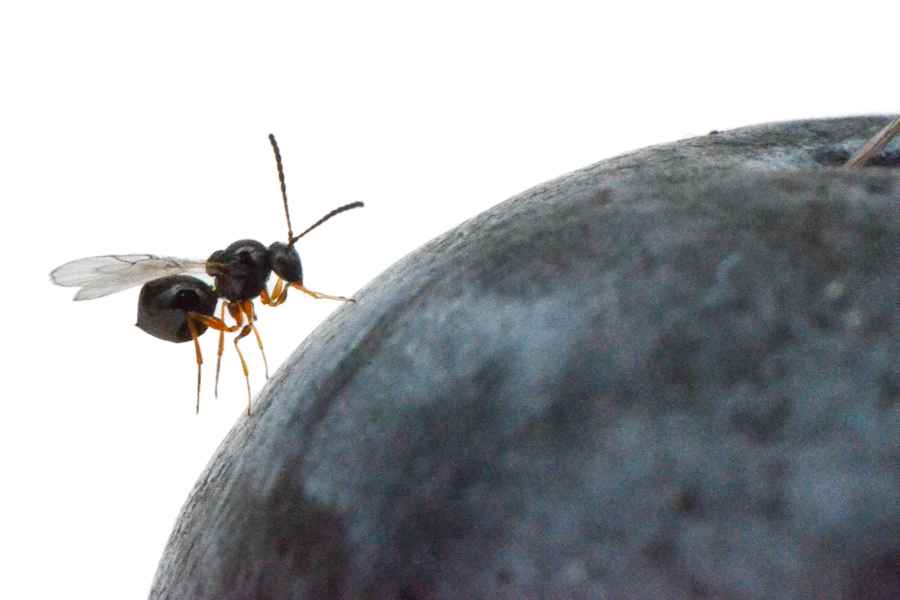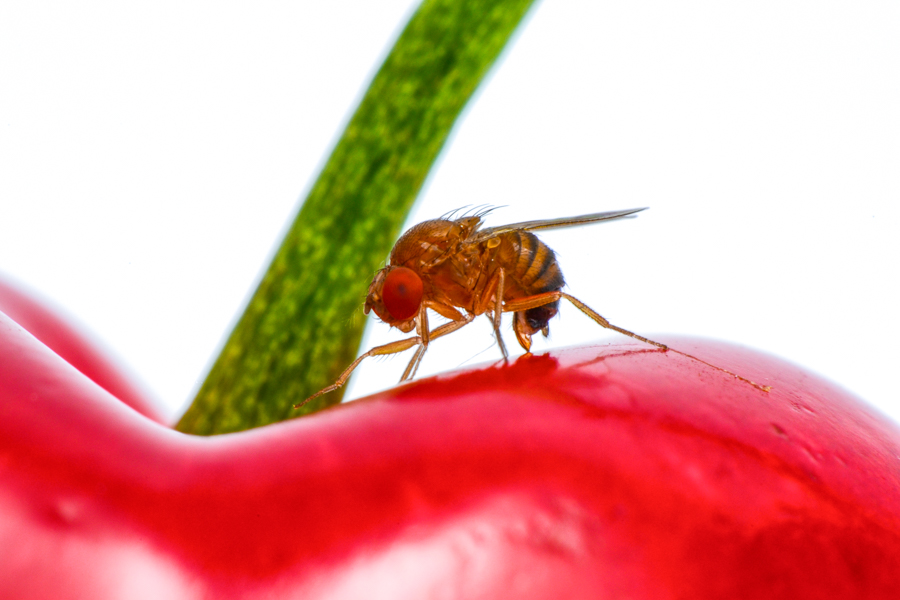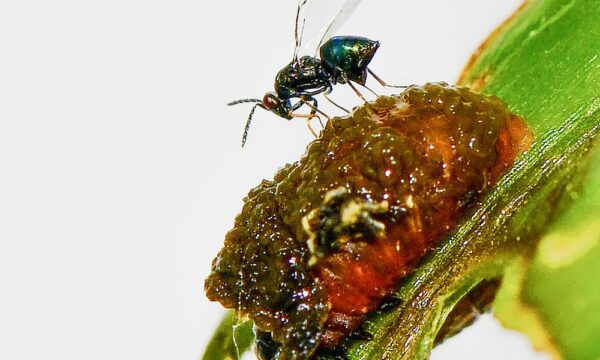
Drosophila suzukii, commonly known as Spotted Wing Drosophila, is an invasive fruit fly native to Eastern Asia that was accidentally introduced to the Americas and Europe in the late 2000s. It has since spread rapidly causing damage to over 150 wild and cultivated fruits like cherries, blueberries, strawberries, and even the fruits of ornamental plants.
What makes D. suzukii particularly damaging is the fact that the female is able to lay eggs inside unwounded ripening fruits with her specialized ovipositor equipped with saw teeth. Thus, making this fruit fly virtually free from competition in invaded areas. It is a major problem for growers, causing extensive damage to soft fruit.
In a paper published earlier this month, researchers led by CABI’s Dr Lukas Seehausen studied the host specificity of the parasitoid and potential biological control agent G1 Ganaspis cf. brasiliensis under semi-field conditions in large-arena field cage releases.
Identifying the ideal parasitoid
Surveys carried out in Asia had found that Ganaspis brasiliensis (Hymenoptera: Figitidae) is the most specific parasitoid of D. suzukii but that there were also varying host specificities between different G. brasiliensis populations.

In fact, further studies suggest that G. brasiliensis is a species complex composed of at least two cryptic species with differing host specificities.
Asian populations were divided into genetic groups named and numbered G1-G5 and under lab conditions, G1 individuals almost exclusively parasitized Drosophila spp. larvae feeding on ripening fruits. This made it the ideal candidate for further testing.
Target vs non-target fruit flies
The research team carried out field cage releases of the parasitoid in two regions of Switzerland exhibiting different climatic conditions in which D. suzukii has been reported to cause damage to fruits.
G1 Ganaspis cf. brasiliensis had the choice to parasitize either the target species D. suzukii larvae in fresh fruits (blueberries or elderberries) or the non-target native species D. melanogaster in decomposing fruits.

The results revealed that larvae of the target species were readily parasitized and of 957 emerging parasitoids, only one was from larvae in decomposing fruits.
Use as a biological control agent
This research supports the finding that G1 G. cf. brasiliensis is a suitable biological control agent for D. suzukii.
As with all biological control agents it is important to note that the risk of released parasitoids occasionally attacking native Drosophila species cannot be excluded. Furthermore, since only one non-target species was tested in this research, results may vary for other species.
Releasing insects as a biological control agent of course requires very detailed information. Since its confirmation in the late 2000s as an invasive species in Europe and North America, research about the classical biological control of D. suzukii has well advanced.
The scientists note that with the first releases of G. cf. brasiliensis in Italy in 2021, a recent acceptance of the application for releases of the same parasitoid in the US, and the submission of an application in Switzerland in February 2022, that the research starts to be implemented into practice.
This is especially pertinent as D. suzukii has also been found in Africa more recently.
Read the paper in full with open access:
Seehausen, M.L., Valenti, R., Fontes, J. et al. Large-arena field cage releases of a candidate classical biological control agent for spotted wing drosophila suggest low risk to non-target species. J Pest Sci (2022).
Find out more
CABI project page: Biological control of the Spotted wing Drosophila – Drosophila suzukii
CABI updates International Soft Fruit Conference on fight against devastating invasive fruit fly
Header photo by Irina Iriser from Pexels
Insect photos © Tim Haye (CABI)
Related News & Blogs
Biological control in action: Zambia’s field days on fighting fall armyworm
Experts from CABI recently held two field days and an expo in Zambia, showcasing innovative approaches to pest management to 584 farmers, agro-dealers and other stakeholders to help raise awareness of approaches to tackle the invasive fall armyworm (Sp…
11 June 2025




